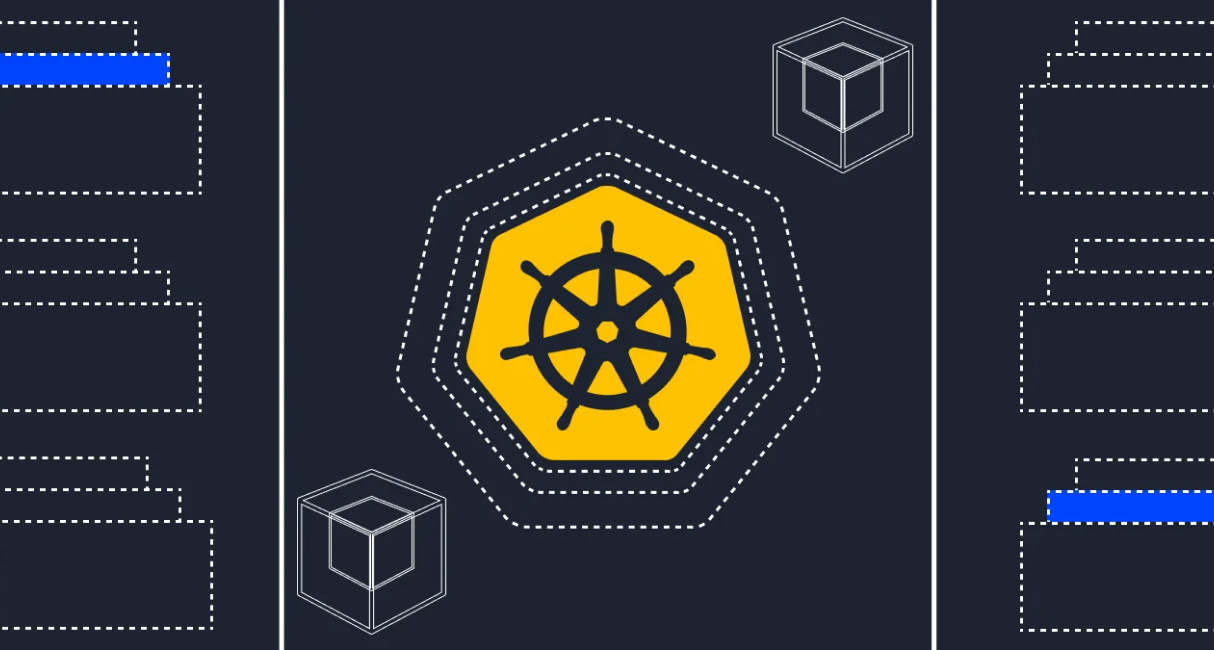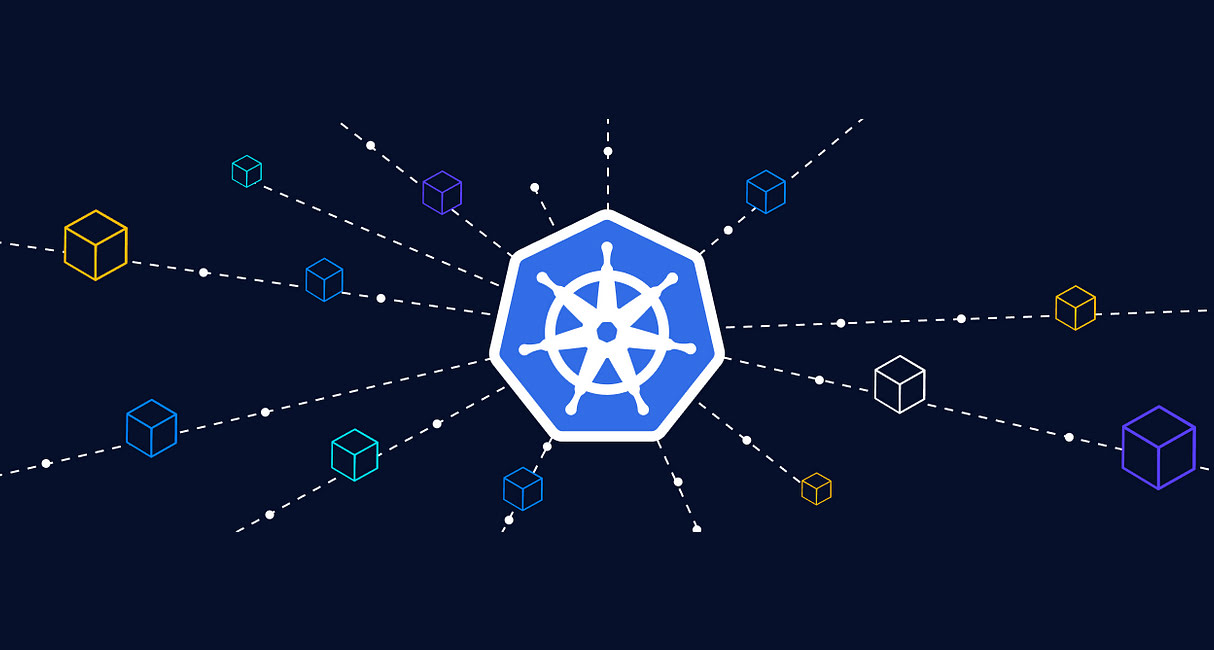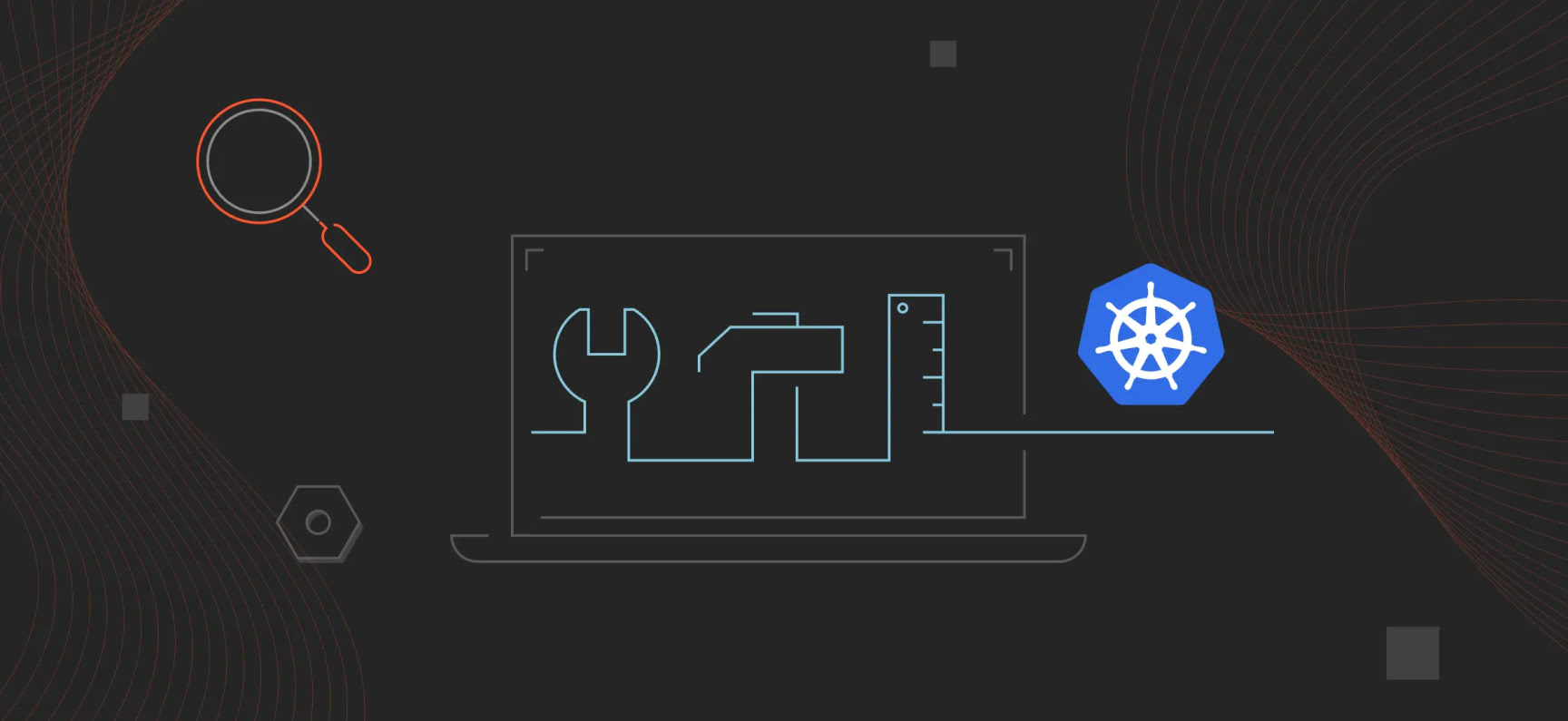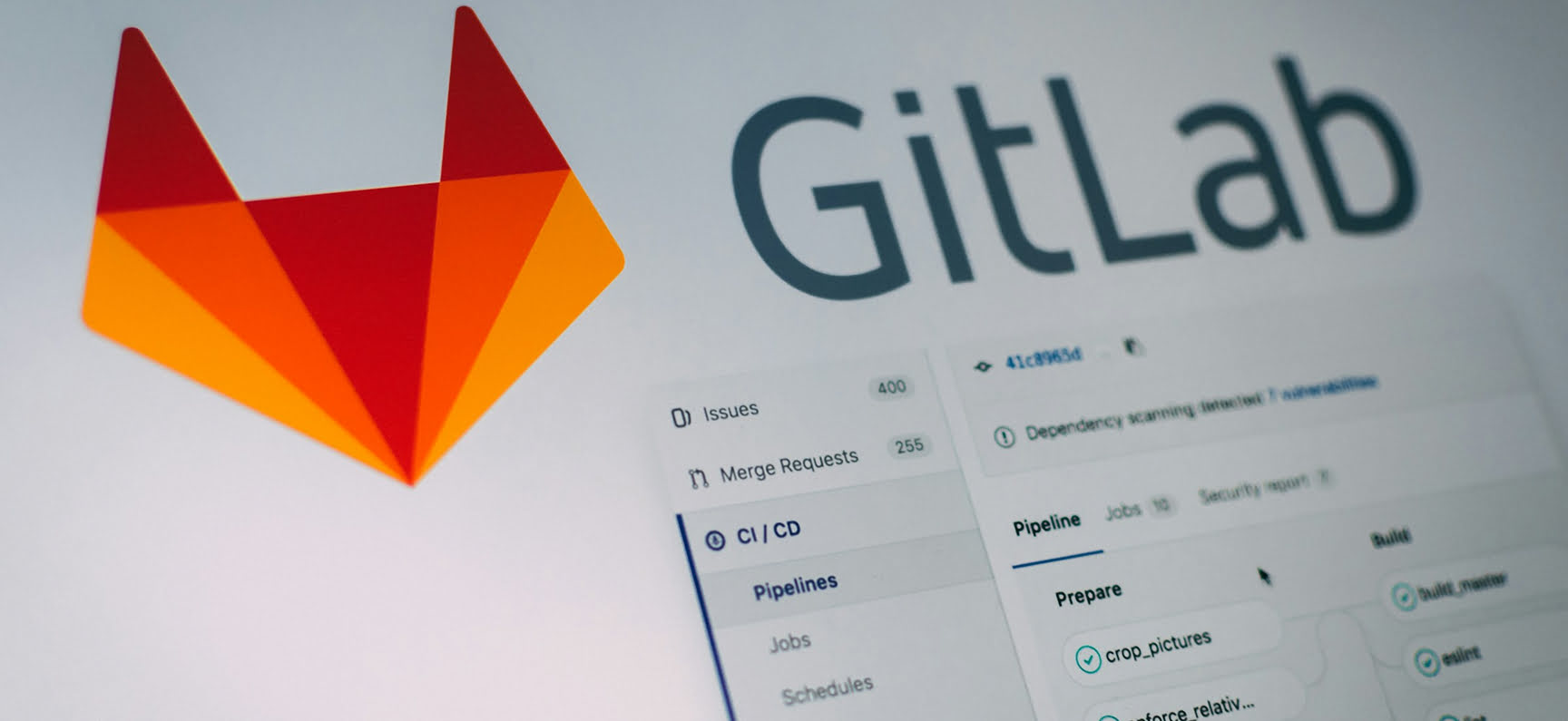Kubernetes is no longer just for tech giants – it’s the backbone of cloud-native infrastructure across industries. But running Kubernetes efficiently in 2025 means going beyond the basics. To get real value, you need tools that bring visibility, security, automation, and control into one cohesive workflow.
That’s why businesses are leaning into the best open source Kubernetes monitoring tools to gain full-stack observability and keep systems healthy in real time. At the same time, the best Kubernetes management tools open source are helping teams simplify operations, streamline deployments, and handle multi-cluster environments without losing their minds.
As more businesses double down on cloud-native development, Kubernetes has evolved from a nice-to-have to a mission-critical foundation. According to Market Research Future, the global container and Kubernetes security market is projected to grow from $7.55 billion in 2025 to $51.51 billion by 2034, registering a CAGR of 23.77%. That kind of growth isn’t just impressive – it’s a loud-and-clear signal that investing in the right Kubernetes utilities isn’t optional anymore, it’s essential.
Whether you're just getting started or scaling across regions, this guide breaks down the top Kubernetes tools every DevOps team should have in their arsenal – and shows you how to pick the ones that align with your goals, budget, and architecture. Let’s dive in.
Why Kubernetes Tools Matter in 2025
Kubernetes has become the backbone of modern infrastructure, but it's not a silver bullet. As clusters scale and microservices multiply, challenges like observability, security, and cost management become more complex. That's where the right utilities come into play.
In 2025, the Kubernetes ecosystem offers a plethora of utilities designed to address these challenges. From monitoring and security to CI/CD and cost optimization, these utilities enhance the capabilities of Kubernetes, making it more manageable and efficient for businesses of all sizes.

Where Do We Use the Kubernetes Tool?
Kubernetes has gone from a developer favorite to an enterprise essential – and for good reason. It's the backbone of modern DevOps, powering everything from rapid deployments to bulletproof security. But what makes it so versatile? Let’s walk through the key areas where Kubernetes utilities deliver serious business value.
-
Application Deployment and Scaling
At its core, Kubernetes automates application deployment, scaling, and management. Teams use the best Kubernetes deployment tools to roll out new features faster, reduce human error, and ensure apps are always available – even under peak traffic. Whether you're launching a new microservice or scaling a global platform, deployment utilities help keep everything smooth and repeatable. -
Security and Compliance
Security is top of mind for every CTO. Open source Kubernetes security tools help identify vulnerabilities, enforce policies, and lock down workloads without slowing teams down. These utilities are critical for securing containerized apps in highly regulated industries like finance and healthcare. -
Development Workflows
Modern development relies on rapid iteration and automated testing. The best Kubernetes tools for developers streamline local development, support GitOps workflows, and integrate cleanly with CI/CD pipelines. Developers can build, test, and deploy in environments that mirror production, reducing bugs and speeding up delivery. -
Cluster Management and Automation
Managing a Kubernetes cluster at scale is no walk in the park. That's why companies rely on Kubernetes cluster management tools to automate routine tasks, manage multiple clusters across environments, and maintain system health. These utilities provide the visibility and control needed to manage infrastructure like a pro.
Categories of Kubernetes Tools You Should Know
Kubernetes may be the engine, but the utilities around it are what make your cloud-native architecture truly hum. As your clusters grow, so does the need for targeted solutions that help you manage complexity, improve visibility, boost security, and deploy faster. Here are the must have Kubernetes tools every modern team should know – organized by category so you can build your stack with purpose.
-
Monitoring & Observability Utilities
These Kubernetes observability tools help you track performance, detect anomalies, and troubleshoot faster. With real-time insights into logs, metrics, and traces, they keep your apps and infrastructure healthy. -
Orchestration & Management Tools
These Kubernetes orchestration tools and dashboards simplify how you manage clusters, scale workloads, and optimize scheduling. They’re essential for teams running large or complex environments. -
CI/CD & DevOps Pipeline Utilities
The best CI/CD tools for Kubernetes and continuous deployment (CD) tools for Kubernetes automate delivery pipelines. They turn every Git push into a production-ready deployment, enabling speed without chaos. -
Security & Policy Enforcement Tools
With Kubernetes becoming a bigger attack surface, open-source security utilities are a must. These tools scan images, enforce policies, and catch threats at runtime before they cause damage. -
Cost Management Utilities
These tools help you identify waste, right-size your resources, and control cloud spend. They’re a must for cost-conscious teams trying to avoid surprise bills. -
Developer Productivity Utilities
The best Kubernetes utilities for developers make testing, debugging, and deploying easier, especially in local environments. They reduce friction, increase velocity, and empower dev teams to ship with confidence. -
Cluster Management Utilities
These tools to manage Kubernetes cluster offer visibility and control over multiple clusters, centralizing operations and simplifying scaling.
Each category solves a key pain point in the container orchestration platform journey, from deployment and debugging to policy enforcement and cost tracking. The right mix of utilities helps you scale with confidence – and avoid growing pains as your infrastructure matures.

Best Kubernetes Tools to Watch in 2025
In 2025, Kubernetes isn't just a buzzword – it's the backbone of modern DevOps. As businesses scale and infrastructure becomes more complex, the demand for efficient, reliable, and secure Kubernetes utilities has skyrocketed. Whether you're a developer looking to streamline your workflow or an operations team aiming for better observability, the right tools can make all the difference. Let's dive into some of the most popular Kubernetes tools that are making waves this year.
These aren't just trendy picks; they're the Kubernetes useful tools in DevOps that teams rely on daily to keep their systems running smoothly. If you're building your container orchestration platform stack from scratch or optimizing an existing setup, this curated list of must-have utilities will help you make smart, scalable choices.
Here are the top Kubernetes tools for 2025:
1. GitLab CI/CD
GitLab CI/CD is one of the best CI/CD tools. It helps developers automate testing, builds, and deployments through Git-based pipelines, offering robust CI/CD security features like container scanning, SAST, and DAST out of the box. With native Kubernetes integration, GitLab makes it easy to deploy applications securely and consistently while keeping a tight grip on compliance.
2. Argo CD
Argo CD stands out in the realm of GitOps, enabling declarative continuous delivery for the container orchestration system. By syncing your clusters with the desired state defined in Git repositories, it ensures consistency and reliability across deployments. For teams embracing DevOps at scale, it’s not just a CI/CD utility – it’s the best deployment application tool for Kubernetes in many real-world stacks.
3. Prometheus + Grafana
When it comes to tools to monitor Kubernetes cluster performance, Prometheus and Grafana are the gold standard. Prometheus scrapes real-time metrics from your workloads, while Grafana brings those numbers to life through intuitive dashboards. Together, they’re not just about metrics – they’re your eyes and ears inside the cluster. Whether you’re tracking uptime, resource usage, or service health, this combo gives you total observability across every layer of your container orchestration platform stack.
4. Helm
Helm simplifies the deployment process by packaging the container orchestration system applications into charts. By using charts to define, install, and upgrade the container orchestration system applications, Helm simplifies versioning and rollout strategies. It’s particularly valuable for tools to create Kubernetes cluster at scale, ensuring consistency and easy rollbacks.
5. Terraform
Terraform isn’t Kubernetes-specific, but it's a cornerstone of modern infrastructure. As one of the top tools to create container orchestration platform clusters, manage cloud resources, and enforce configuration management policies, it ensures your entire environment – apps, services, and infrastructure – remains consistent and codified.
6. ELK Stack (Elasticsearch, Logstash, Kibana)
Need powerful logging and visibility into your production cluster? The ELK Stack is your answer. Logstash collects and transforms logs, Elasticsearch indexes and stores them, and Kibana gives you powerful visualizations to detect anomalies and drill down into issues. It’s a critical part of any DevOps pipeline, enabling advanced runtime diagnostics, security testing, and real-time observability in your container orchestration platform ecosystem.
7. Cluster Autoscaler
Cluster Autoscaler is one of the most essential Kubernetes auto scaling tools. It automatically adjusts the number of nodes in your cluster based on usage, scaling down when resources aren’t needed and scaling up when demand spikes. This tool helps ensure your infrastructure is always right-sized – no more overpaying for idle nodes or scrambling when traffic surges.
8. Karpenter
Karpenter is a next-gen node provisioning solution built by AWS. It’s faster, smarter, and more efficient than traditional autoscalers. Designed for elasticity, it provisions the right compute at the right time – perfect for dynamic workloads, and a strong contender in the list of AI tools.
9. Crossplane
Crossplane redefines infrastructure management by bringing it into the Kubernetes ecosystem. It enables the provisioning of infrastructure like databases, networks, and cloud services using the container orchestration system APIs. Crossplane is increasingly used in utilities to create clusters and automate infrastructure at scale – making it an essential part of AI tools in DevOps strategies where infrastructure and workloads must be dynamically managed.
10. Flux
Flux is another powerful GitOps tool, similar to Argo CD, and often used in large-scale production environments. It continuously reconciles your desired state from Git, integrates with Helm, and supports secure secret management. If you're looking for production-grade continuous delivery tools, Flux is a solid pick.
Choosing the Right Kubernetes Tools for Your Stack
Selecting the right Kubernetes development tools isn't just about following trends – it's about aligning with your organization's unique needs and goals. Whether you're focused on cost optimization, enhancing developer velocity, ensuring compliance and security, or improving observability, the utilities you choose can make a significant difference.
| Business Need | Tools | What It Solves |
| GitOps & Deployment | Argo CD, Flux | Enables declarative continuous delivery and seamless Git-based cluster syncing. |
| Developer Velocity | Helm, Argo CD | Streamlines app packaging and continuous deployment using GitOps. |
| Security & Compliance | GitLab CI/CD, ELK Stack, Crossplane, Flux | Real-time threat detection, runtime security, policy enforcement, vulnerability scanning, and audit logging. |
| Monitoring & Observability | Prometheus + Grafana | Tracks system performance, logs, alerts, and visualization. |
| CI/CD Integration | GitLab CI/CD | Automates build, test, and deployment with strong CI/CD security features. |
| Application Packaging | Helm | Simplifies deployments using reusable charts for consistent rollouts and rollbacks. |
| Logging & Diagnostics | ELK Stack | Centralized logging, advanced runtime analysis, and production-grade troubleshooting. |
| Visualization & UI | Lens, Skooner | Provides an interactive dashboard and workload visualization. |
| Load Testing | k6, Testkube | Simulates traffic to ensure applications scale under demand. |
| Auto Scaling | Cluster Autoscaler, Karpenter | Dynamically adjusts cluster size based on real-time usage to optimize costs. |
| Advanced Provisioning | Karpenter | Intelligent and fast provisioning for elastic workloads, built for modern scale. |
| Free & Open Source Essentials | Helm, Prometheus, Grafana | Cost-effective, community-supported tools for security, monitoring, and backup. |
| Continuous Delivery | Flux | Git-driven delivery, Helm integration, and secret management at production scale. |
Before full-scale adoption, consider conducting proof-of-concept (PoC) tests to evaluate tool effectiveness in your environment. Don’t just jump in because something’s trending – make sure each utility fits your team’s workflows, DevOps automation strategy, and long-term roadmap.

Expert Opinion «From our hands-on experience, the most impactful Kubernetes tools are the ones that blend automation, visibility, and cost-efficiency. Helm simplifies package management, Argo CD and Flux streamline GitOps workflows, and Prometheus with Grafana gives us a crystal-clear view into system health. Tools like Cluster Autoscaler and Karpenter help us cut cloud costs without sacrificing performance. When it comes to consistency, Terraform and the ELK Stack are absolute must-haves for managing infrastructure and keeping logs under control.»Oleksandr Melnychenko DevOps Engineer at Artjoker
At the end of the day, the best tools for Kubernetes are the ones that solve your real-world problems – whether that’s CI/CD speed, better monitoring, improved security, or more predictable costs. Align tools with business outcomes, not just technical specs.
How Artjoker Helps You Build the Perfect Kubernetes Stack
Let’s be real – building a container orchestration platform stack from scratch is no small feat. Between choosing the right cluster management utilities, figuring out your CI/CD development, and keeping cloud costs from spiraling, it’s easy to feel overwhelmed. That’s where Artjoker comes in.

We work closely with tech leaders to cut through the noise and design the container orchestration system stacks that are battle-ready and business-aligned. Whether you’re starting fresh or managing a complex migration from legacy infrastructure, our DevOps engineers don't just pick trendy tools – we help you build a stack tailored to your goals.
What we offer:
-
Tool Audits & Recommendations
We evaluate your current infrastructure and suggest the most useful Kubernetes tools – from the best deployment application tools to open source security tools. -
Proof of Concept (PoC) Implementation
Not every utility fits out of the box. We test shortlisted options in your environment first, so you don’t waste time or budget. -
Custom Development
We design, deploy, and scale the container orchestration system environments built for resilience, agility, and growth. -
DevSecOps Services
From security scanning and testing to compliance automation, we make sure your stack is secure and audit ready. -
Cost Management & Optimization
We implement tools like Kubecost and strategies like auto-scaling to help you save money without sacrificing performance. -
CI/CD Pipeline Development & Automation
We streamline your delivery process using utilities like Argo CD, Tekton, and Jenkins X – tailoring a pipeline that makes deployments fast, safe, and repeatable.
Conclusion
Kubernetes is powerful – but only when it’s backed by the right tools, processes, and strategy. On its own, it’s like a high-performance engine without a dashboard, tires, or steering. You need the right components around it to really move fast, stay in control, and go the distance.
As more companies shift toward microservices and cloud-native infrastructure, the complexity grows. Visibility becomes harder, security gets trickier, and managing costs turns into a constant battle. That’s where smart tooling comes in – not just to make life easier, but to unlock the full potential of what the container orchestration system was built for: speed, resilience, and scale.
At Artjoker, we’ve been in the trenches with teams just like yours. We know what works, what scales, and what’s worth skipping. From planning to implementation to long-term support, we help you put together a tech stack that’s not just functional – it’s future-ready.
Don’t just use Kubernetes – master it. Let Artjoker help you choose, deploy, and optimize the tools that make your infrastructure bulletproof. Want to optimize your Kubernetes setup with the right tools? Let’s build a rock-solid stack together – reach out today.
Similar articles
View allyour business
together
- PROJECT INQUIRIES info@artjoker.net
- CALL US +1 213 423 05 84
contact us:












